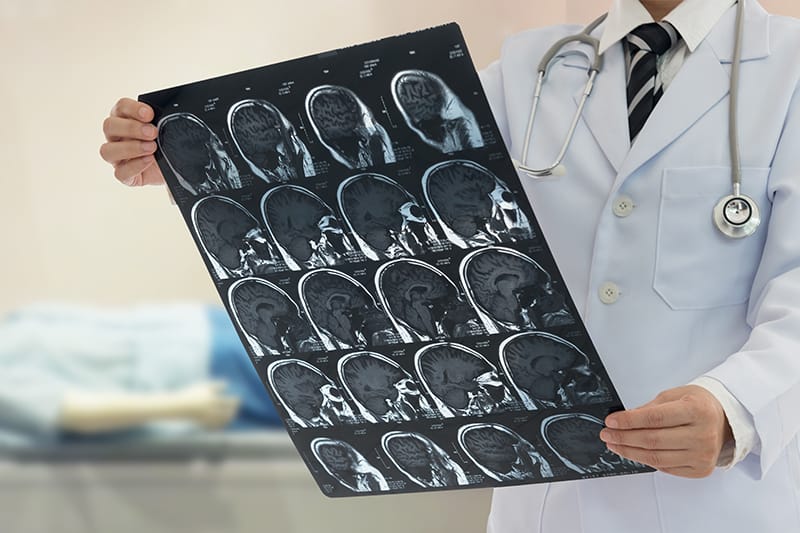Something doesn’t add up about strokes.
They are common. Someone suffers a stroke every 40 seconds, which adds up to nearly 800,000 stroke victims every year.
They are preventable. Up to 80 percent of strokes can be prevented, making it the leading cause of preventable disability.
So how does something we see so often and know we can stop still have such a devastating impact?
We’re not doing enough — or being fast enough — to stop strokes when we spot the signs.
What are the signs of a stroke?
“Strokes come on suddenly. In an instant, the blood flow to the brain is disrupted or cut off completely, and brain cells start dying,” says Danney Drewry, DO, a Primary Care physician at The Iowa Clinic’s Ankeny campus. “Since the brain controls the body, both lose function.”
It’s in that loss of function where you can see what’s going on in someone else’s brain.
5 Classic Warning Signs of Stroke
If any of these symptoms happen suddenly, you might be witnessing a stroke:
- Weakness or numbness in the face, arm or leg, usually on just one side
- Difficulty speaking or understanding language
- Decreased or blurred vision in one or both eyes
- Unexplained loss of balance or dizziness
- Severe headache with no known cause
These classic stroke symptoms can last a few minutes. Or a few hours. It could be a single symptom or a combination. It all depends on what part of the brain is without blood and at what point blood flow is restored.
“If you have an inability to speak words, notice food or liquid falling out of your mouth due to facial droop, you could be having a stroke. If you experience numbness in your face or extremities, can't move an arm or leg or have a sudden onset of double vision or dizziness — those are other possible stroke symptoms.”
Strokes Can Run in the Family
If you’ve witnessed a loved one suffer a stroke, act now to prevent it from happening to you.
Other Common Symptoms of Stroke
Sometimes stroke symptoms are less obvious. But many people — even medical professionals — have trouble recognizing symptoms outside the classic warning signs. So they don’t attribute double vision, drowsiness, nausea or vomiting to a stroke, especially if the symptoms are only temporary.
That’s a problem for women, who experience strokes differently than men. While women display the typical signs of stroke, they also report a set of symptoms all their own. These symptoms happen just as unexpectedly as the others:
- Pain in the face or legs
- Hiccups
- Feeling weak all over
- Chest pain
- Shortness of breath
- Rapid heartbeat
What should I do when I see these signs?
Think fast.
No, really. A stroke is a medical emergency. The stroke victim needs treatment right away. That requires quick thinking and action on your part.
The medical community developed a simple test using the acronym F.A.S.T. to help people remember the most common warning signs of stroke and react accordingly. If you think someone is suffering a stroke, give them this test:
F = Face — Ask the person to smile. Does one side of the face droop? Is the smile uneven? That’s a sign of weakness or numbness in the face.
A = Arms — Ask the person to raise both arms. Does one arm drift downward? Can they lift one arm higher than the other? That signals weakness on one side of their body.
S = Speech — Ask the person to repeat a simple phrase. Did they slur? Did their speech sound strange? Could they even repeat the phrase? Trouble speaking is a tell-tale sign of stroke.
T = Time — If the person failed any part of the test, note the time and get help. Call 9-1-1 immediately. Let them know what time you gave this test so they can estimate the length of the stroke.
“Time is the most important thing during the early stages of a stroke. You need to get the person to the nearest ER as soon as possible,” advises Dr. Drewry.
So if you want to think of it another way, act FASTER ASAP!
What if the symptoms pass?
Just because the symptoms go away doesn’t mean everyone’s in the clear. A stroke of any duration can do lasting damage. Even if you’re wrong, it’s better to be safe and seek treatment than to ignore the warning signs of a potentially deadly event.
And you may be wrong.
What you think is a stroke could actually be a transient ischemic attack (TIA). TIAs are called mini-strokes because they share all the same symptoms as strokes. Symptoms are typically fleeting, lasting as little as one minute. But a mini-stroke can last up to 24 hours.
“Initially, you can’t tell the difference between a stroke and a mini-stroke,” Dr. Drewry says. “The only way you can determine that is if symptoms resolve within 24 hours. Otherwise, the presentation is exactly the same.”
Unlike strokes, TIAs don’t kill brain tissue or cause permanent disability. But they’re often a sign of bigger things to come. A third of people who have a mini-stroke go on to have a stroke because the underlying cause is the same. High blood pressure, heart disease, diabetes, carotid artery disease — whatever’s limiting blood flow to the brain is still there. By identifying the cause of a mini-stroke, a health professional can help in managing the condition and reducing the risk of a stroke.
Do the math. We can prevent 600,000 strokes a year and keep 600,000 people from disability. When you spot the five classic warning signs or other sudden stroke symptoms, dial 9-1-1 ASAP. And if you’ve experienced these symptoms yourself, talk to your health care team to help keep you from becoming a preventable statistic.


